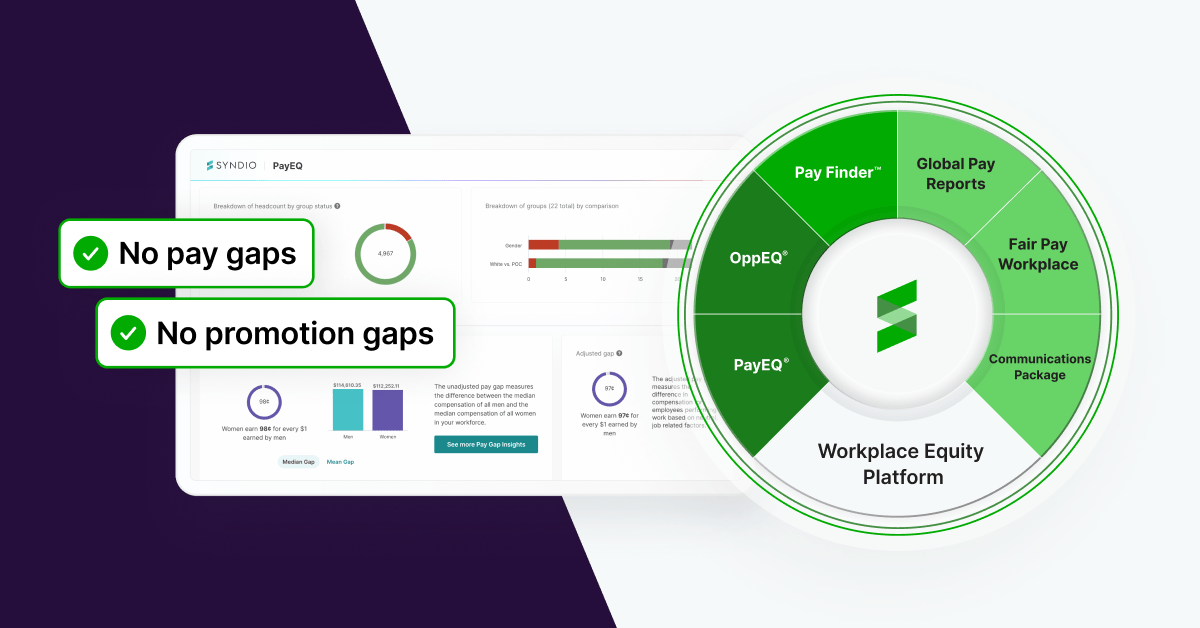Job architecture is on the minds of many Total Rewards folks right now. Maybe you faced a new demand for pay explainability during your annual review cycle, as managers and employees navigated job pay range discussions for the first time. Maybe employees have been asking why some jobs are paid more than theirs and what they can do to earn more. You may also be concerned that an outdated job architecture might mislead employees in comparing their roles with others, fueling assumptions of pay equity discrepancies as they share pay information.
Many companies have out-of-date (or even nonexistent) job architectures. They feel pressured to “get their house in order” before they do anything else, including pay equity. After all, conventional thinking dictates that you need a well-defined job architecture before you can even begin thinking about a pay equity analysis. But by not taking action, Compensation teams remain stuck in reactive mode when asked to explain their pay program to employees.
With a few steps, Total Rewards/Compensation professionals can get proactive around job architecture and while ensuring fair pay at the same time. Here’s how.
1. Create accurate comparisons of your current state using what you have.
The truth is, you are delivering compensation through some set of values and criteria, which means you have at least enough information to perform a baseline analysis. Syndio’s team of experts can use the clues in the data you have — such as job titles, reporting relationships, levels of pay, departments, or countries/locations — to help you create the right job groupings to perform an analysis. In our experience, most companies that don’t have “perfect” compensation structures are surprised to find they’re able to make accurate comparisons across most of their population.
2. Get insights you can use for your new job architecture design.
In fact, having this baseline helps inform the design of your new job architecture. Examining the controls that are driving pay will help you understand the value you are currently placing on management responsibilities, skills, and experience — typically the elements you’ll be defining and using as the framing of your new job architecture. Furthermore, gaining insights at the job function and family level allows for a tailored approach, ensuring that the revamped job architecture highlights the unique needs and priorities of each business segment.
3. Test and refine the results of job leveling and employee mapping as you build the job architecture to ensure it’s equitable before going “live.”
Our experts can help ensure you’re testing the fairness of decisions made during the development of your new job architecture. For example, you can compare the incumbent in each job to its “peer” jobs by using a variety of metrics that evaluate salary, benefits, and job qualification requirements. By performing this type of testing, you can ensure that similar jobs across business segments are accurately valued and rewarded. Additionally, you’ll be able to better understand any gaps that need to be addressed. This method helps to ensure you’re providing a fair and equitable job architecture for all of your employees. Questions to test include:
- Are the factors in your job evaluation framework being applied fairly across jobs?
- Are the “winners” and “losers” from job leveling and employee mapping equitably distributed?
- Are compensation changes equitably distributed?
- Is each job and employee in each function leveled and mapped fairly? Are you observing consistency as you complete more functions?
4. Implement with confidence.
Implementation of a new job architecture takes time. We can help you test different scenarios for your transition plan so you can see how best to prioritize the transition from the current state of employees’ pay to the final future state. We can also provide guidance on how to communicate the changes to your C-suite, managers, and employees.
5. Govern the change.
Finally, you can use our platform to help embed the new job architecture in compensation decisions going forward. Syndio’s Pay Finder™ tool provides real-time guidance for starting pay and promotions based on the integration of your new structure with how you currently pay employees. By providing access to this guidance to the recruiters and hiring managers making day-to-day pay decisions, you ensure a smooth transition to paying employees competitively and fairly.
Build a solid foundation for fair and explainable pay
Don’t let perfect be the enemy of good. Building a sound job architecture lays the groundwork for fair, justifiable, and competitive compensation. You’ll be better armed to demystify the logic behind pay as employees start to question why they’re paid what they’re paid. A solid job architecture also provides a foundation for opportunity equity — ensuring that every employee has equitable access to career development and growth.
Want to learn more about how to rethink your compensation program design in the era of pay transparency?
The information provided herein does not, and is not intended to, constitute legal advice. All information, content, and materials are provided for general informational purposes only. The links to third-party or government websites are offered for the convenience of the reader; Syndio is not responsible for the contents on linked pages.


